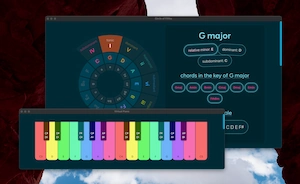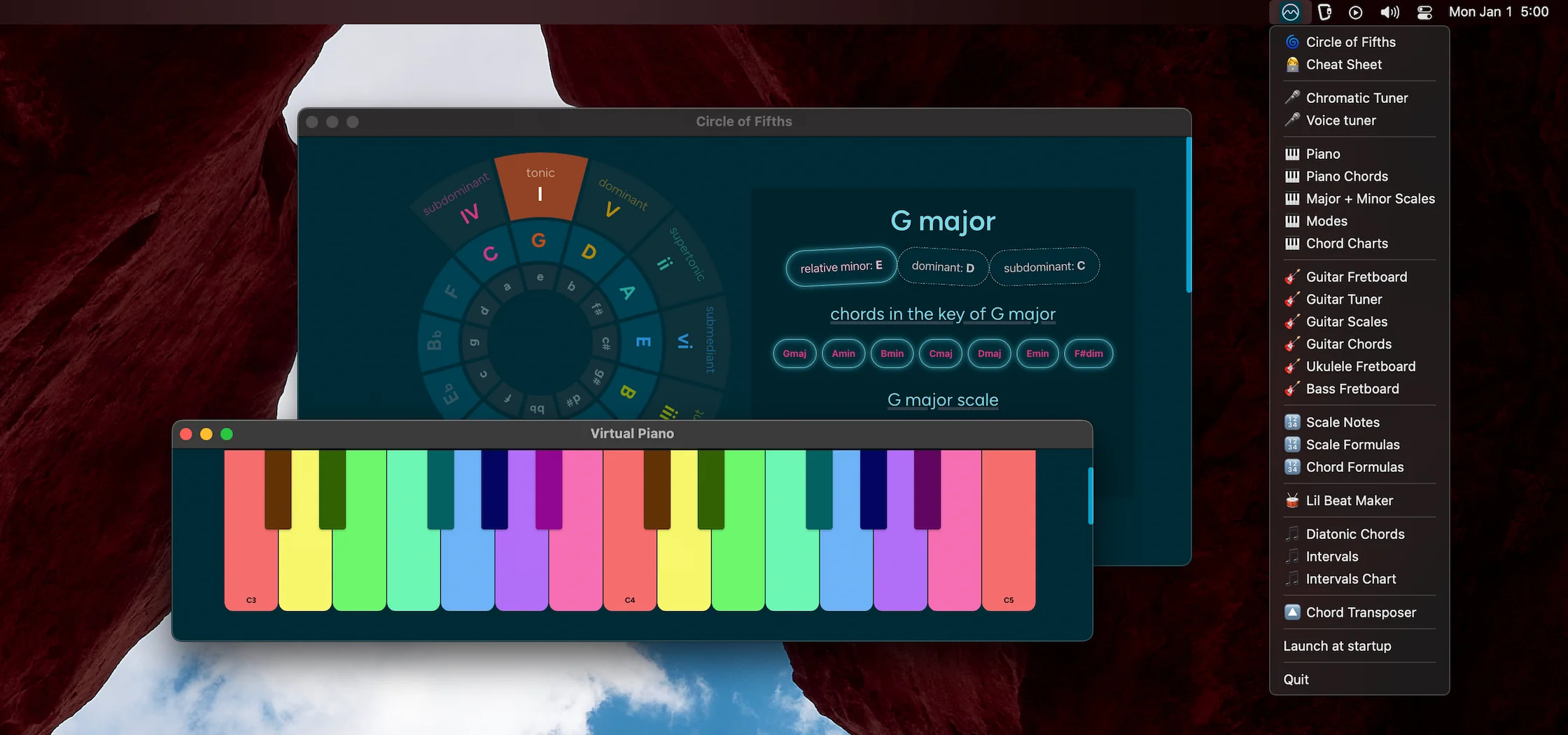The Octave: the Most Perfect of All Perfect Intervals
An octave in music, also sometimes called a
perfect octave, refers to the
interval between two notes where the frequency of
the higher note is exactly double the frequency of the lower note. For
example, if the lower note has a frequency of 440 Hz (A4), the note one octave
above it will have a frequency of 880 Hz (A5).
The reason it's called an octave is because in the
diatonic scale, which has 8 notes (ex: C, D, E,
F, G, A, B, C), going up 8 notes from C lands you on C again, just an octave
higher.
This visual tool makes it easy to hear a note at different octaves. Just
select a note, and then click on any of the circles representing an octave
number. Hear how the note sounds the same to our ear, just on a different
register.
More About the Octave in Music
In the chromatic scale, there are 12 notes within an octave. But the name octave comes from the diatonic scale, where going up 8 scale degrees takes you to the next note with the same letter name and double the frequency.
So while the chromatic scale contains 12 notes (C, C#, D, D#, E etc.), the interval itself is named an octave because in the diatonic scale, it represents the 8 steps between notes with the same letter name and double the frequency.
Our brain perceives notes that are an octave apart as being the same note,
just in a different register. This is because the notes have a 2:1 frequency
ratio. The overtones of the higher C align
with the overtones of the lower C, creating a similar sound.
Notes that are an octave apart sound so similar that melodies can be
transposed up or down by an octave and still be easily recognizable. This
has to do with its 2:1 frequency ratio. While other intervals also have
consistent mathematical relationships, none are as simple and perfect as the
octave.



